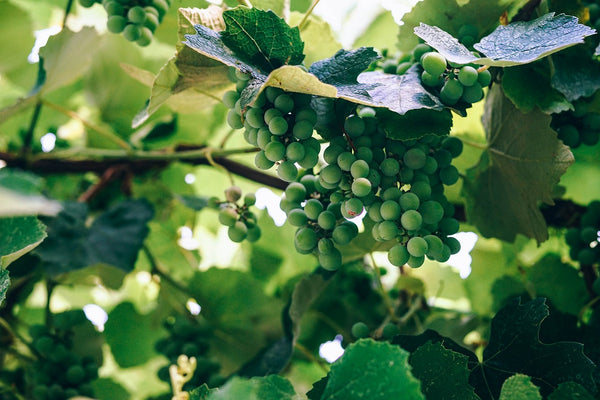Chardonnay is one of the most prestigious and well-known types of white wine in the world. It's popular with both wine experts and regular drinkers because it has a wide range of flavors and can be made with a variety of winemaking methods. But even though Chardonnay gets a lot of praise, wine lovers still have a common question: Is it sweet or dry?
Sweetness in Chardonnay
Chardonnay is a flexible and widely grown grape variety that can be made in a wide range of styles, from very dry to very sweet. To figure out where a Chardonnay fits on this range, you have to look at a few key signs that show how sweet or dry it is.
Residual Sugar (RS) Content
One of the most direct indicators of a wine's sweetness is its residual sugar (RS) content, measured in grams per liter (g/L). Wines with higher RS levels tend to taste sweeter, while those with lower RS levels are perceived as drier. Chardonnay wines labeled as "dry" typically have minimal residual sugar, often less than 5 g/L, resulting in a crisp, refreshing palate.
Acidity
Acidity is a very important part of balancing out how sweet a wine tastes. Even if they still have a small amount of sugar left over, Chardonnay wines with more acidity may taste dry. On the other hand, wines with less acidity may taste sweeter, especially if they don't have the sharpness and freshness that acidity brings.
Oak Influence
Chardonnay wines can get hints of sweetness from sitting in oak barrels, especially when the barrels are toasted and add vanilla, caramel, or butterscotch flavors. Wines that have been aged in oak barrels may seem sweeter than they really are because of compounds that come from wood, even if they only have a small amount of sugar left in them.
Fruit Character
The fruitiness of Chardonnay wines can also change how sweet they seem. Some people think that wines that taste like ripe tropical fruits like pineapple, mango, or peach are sweeter, while wines that taste like citrus, green apple, or minerals may be dry.
Winemaking Style
Through methods like malolactic fermentation and blending, winemakers have a lot of control over how sweet Chardonnay wines end up being. When wines go through malolactic fermentation, they often have creamier textures and softer acidities, which can make them seem sweeter even if they don't have any leftover sugar.
Is Chardonnay sweet?
Chardonnay is generally known as a dry wine, but its sweetness can vary depending on factors such as where it's grown, how it's made, and whether any residual sugar is left after fermentation. Understanding the wine sweetness scale can help clarify the sweetness level of Chardonnay and other wines.
Chardonnay Sweetness Chart

Bone Dry (Less than 1 gram of sugar per liter): This group of Chardonnays is called "bone dry," which means they have very little to no leftover sugar. Most of the time, these wines are dry, crisp, and acidic, with no sweetness that you can taste. Muscadet and Brut Nature sparkling wines are both examples of Chardonnays that are very dry.
Dry (Less than 10 grams of sugar per liter): Dry Chardonnays have a slightly sweet taste that is matched by their acidity, making the wine taste crisp and clean. Most of the time, these wines show off the fruity flavors of Chardonnay without being too sweet. Chablis and many unoaked or lightly oaked wines from cool climate places are examples of dry Chardonnays.
Off-Dry (Between 10-35 grams of sugar per liter): When compared to dry wines, off-dry Chardonnays are a little more sweet, with a sweetness that is noticeable but not too much. Because they still have some sugar in them, these wines often taste like ripe fruits and have a fuller mouthfeel. People who live in hot places or who use winemaking methods like botrytized or late-harvested grapes can make Chardonnays that are not dry.
Medium-Sweet (Between 35-120 grams of sugar per liter): This group of Chardonnays has a noticeable sweetness that can run from not too sweet to dessert-like. These wines may taste like honey, caramel, or ripe tropical fruits. They have a rich, full-bodied feel in the mouth. Medium-sweet Chardonnays are often made from grapes that were picked late or by using methods like botrytization or making ice wine.
Sweet (More than 120 grams of sugar per liter): There aren't many sweet Chardonnays; most of the time, they're dessert wines. The strong sweetness of these wines comes from the high amount of residual sugar they still have. Chardonnays that are sweet may taste like honey, roasted nuts, or dried fruits. They have a syrupy texture and a finish that lasts for a long time.
Chardonnay Styles

Unoaked Chardonnay
Unoaked Chardonnay, which is also called "naked" or "unwooded" Chardonnay, ferments and ages in neutral containers or tanks made of stainless steel. This keeps the freshness and natural fruit tastes of the grapes. These wines usually have a clean, crisp taste and smell of citrus, garden fruit, and bright acidity. People who want pure fruit expression and a lighter, more refreshing style like unoaked Chardonnays.
Oaked Chardonnay
Oaked Chardonnay is fermented and aged in oak barrels, which gives the wine more flavor and texture. Vanilla, caramel, and spice flavors, as well as a creamy mouthfeel, are added by aging in wood. This is often called the "oak influence." Chardonnays that have been aged may have fuller, more complex flavors with hints of ripe tropical fruits, buttery notes, and toasted oak. People who like fuller-bodied, more luxurious styles with lots of taste and complexity will like these wines.
Cool Climate vs. Warm Climate Chardonnay
A wine called Chardonnay can have different tastes based on where it was grown. Cool weather When Chardonnays come from places with cooler temperatures and longer growing seasons, they tend to have more acidity, less fruit, and strong mineral notes. There are often notes of green apple, lemon, and wet stone in these wines, and the end is often crisp and sour. Warm climate Chardonnays, on the other hand, have riper fruit tastes, less acidity, and richer textures. They are grown in places with warmer temperatures and lots of sunshine. There are strong notes of tropical fruits like pineapple, peach, and melon, along with caramel and baking spices.
Sparkling Chardonnay
Chardonnay is also an important part of a lot of sparkling wines, like Champagne and other standard method sparkling wines. Chardonnay adds acidity, structure, and elegance to sparkling wines, whether it's used alone or in a blend. Its aromas often include crisp apple, lemon, and floral notes. Sparkling Chardonnays, which can be very dry or slightly sweet, are a fun and refreshing option to still wines.
How Should I Serve and Store Chardonnay?
Serving Temperature
Chardonnay is best served chilled but not overly cold. The ideal serving temperature for unoaked or lightly oaked Chardonnay is around 50-55°F (10-13°C), while oaked Chardonnay can be served slightly warmer, around 55-60°F (13-16°C). Serving Chardonnay too cold can mute its flavors, so consider taking the bottle out of the refrigerator 20-30 minutes before serving to allow it to warm up slightly.
Storing Chardonnay
When storing Chardonnay, aim to maintain a consistent temperature between 45-65°F (7-18°C) in a dark, humidity-controlled environment. Store bottles horizontally to keep the cork moist and prevent air from seeping into the wine. Avoid storing Chardonnay in areas prone to temperature fluctuations or exposure to direct sunlight, as these can degrade the wine's quality over time.
Decanting
While Chardonnay is not typically decanted like red wines, some oaked Chardonnays can benefit from a brief decanting to help soften any overly pronounced oak flavors and allow the wine to open up. Decanting for 15-30 minutes before serving can help integrate the wine's aromas and flavors.
Glassware
Use a medium-sized wine glass with a wide bowl and tapered rim to fully appreciate the aromas and flavors of Chardonnay. The wide bowl allows for aeration, while the tapered rim helps concentrate the wine's aromas, enhancing the tasting experience.
Best Foods Paring with Chardonnay
Seafood
Chardonnay goes well with fish because it has a crisp acidity and citrus notes. Grilled fish with light seasonings, like halibut or sea bass, goes well with unoaked Chardonnay. On the other hand, lobster or crab cakes go well with oaked Chardonnay's buttery texture and mild oak flavors.
Poultry
Chardonnay goes well with a lot of different chicken recipes because it has a medium to full body and a balanced acidity. Chardonnay goes well with roasted chicken with herbs, lemon, and garlic or creamy chicken Alfredo pasta. These foods bring out the richness and smoothness of the wine.
Creamy Pasta Dishes
Oaked Chardonnay goes really well with creamy pasta recipes because it has a creamy texture and light oak notes. If you want to bring out the creamy mouthfeel and buttery flavors of oaked Chardonnay, try it with fettuccine Alfredo, carbonara, or pasta primavera with a creamy sauce.
Soft Cheeses
Chardonnay goes well with soft, creamy cheeses because it has a buttery taste and a hint of oak. Chardonnay goes well with Brie, Camembert, or triple cream cheeses because they make the wine taste and feel even creamier and bring out its rich flavors.
Vegetarian Dishes
Chardonnay goes well with a wide range of vegetarian meals because it is versatile and goes well with many different types of vegetarian food. Chardonnay's fruity flavors and bright acidity go well with grilled veggies, risottos, or vegetable quiches. They make a nice contrast to the savory and earthy flavors of the food.
Lightly Spiced Dishes
Chardonnay goes well with foods that aren't too spicy because it has light oak flavors and a mild acidity. Chardonnay's citrus notes and balanced acidity make hot foods like Thai or Indian curries, grilled shrimp with mango salsa, or spicy chicken tacos taste even better. They work well with the spices because they cool you down.
Salads
Chardonnay goes well with fresh green salads because it has a crisp acidity and citrus notes. Fresh and lively foods like salads with lemon vinaigrettes, grilled chicken, or shrimp go well with Chardonnay because they bring out its fruity and acidic qualities.









